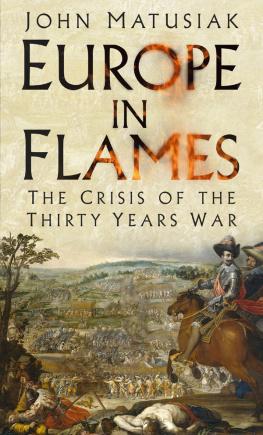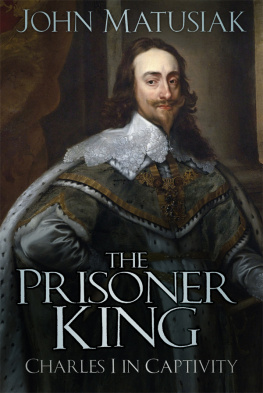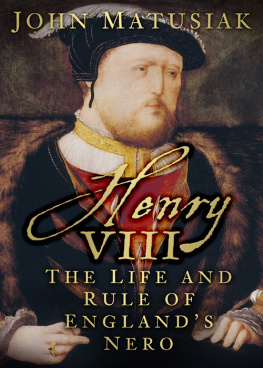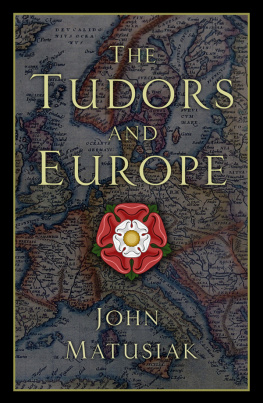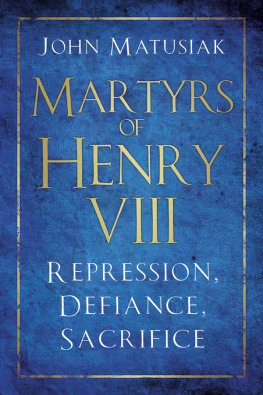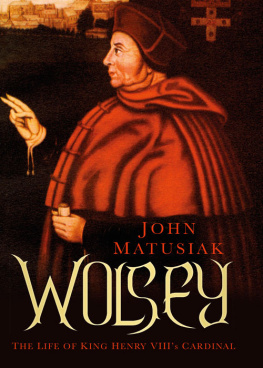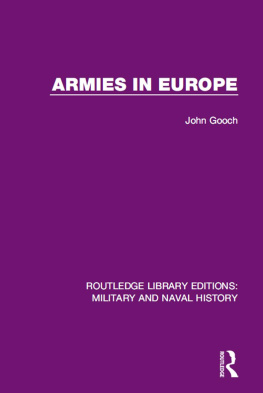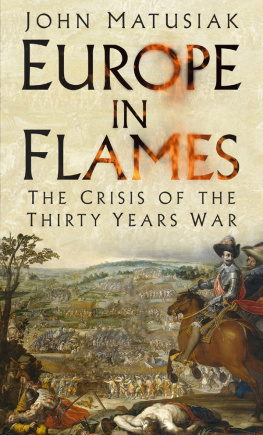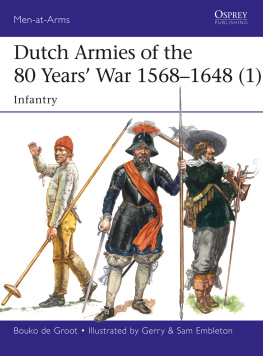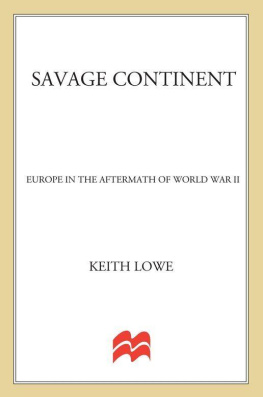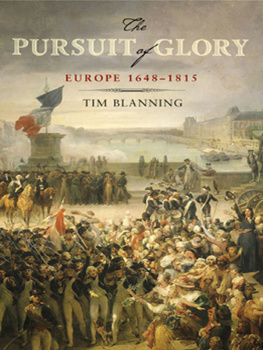Contents
Guide


To all my special friends across the years.
First published 2018
The History Press
The Mill, Brimscombe Port
Stroud, Gloucestershire, GL5 2QG
www.thehistorypress.co.uk
John Matusiak, 2018
The right of John Matusiak to be identified as the Author of this work has been asserted in accordance with the Copyright, Designs and Patents Act 1988.
All rights reserved. No part of this book may be reprinted or reproduced or utilised in any form or by any electronic, mechanical or other means, now known or hereafter invented, including photocopying and recording, or in any information storage or retrieval system, without the permission in writing from the Publishers.
British Library Cataloguing in Publication Data.
A catalogue record for this book is available from the British Library.
ISBN 978 0 7509 8969 5
Typesetting and origination by The History Press
Printed and bound by CPI Group (UK) Ltd
eBook converted by Geethik Technologies
Eilt, dass ihr den Verstand zum Nutzen noch gebrauchet,
Eh dann Europa ganz, das golden Land, verrauchet!
Ach, glaubt mir, einmal sich erreten von den Kriegen
Ist mehr, als tausendmal unberwindlich siegen.
Hasten, use your common sense,
Before the whole of Europe, that golden Land, goes up in smoke!
Believe me, avoiding war
Is more than a thousand victories.
Andreas Scultetus, Friedens Lob- und Krieges Leid-Gesang (1641)
CONTENTS

1
THE CRUCIBLE
[Germany] is now become a Golgotha, a place of dead mens skuls; and an Acaldama, a field of blood. Some nations are chastised with the sword, others with famine, others with the man-destroying plague. But poor Germany hath been sorely whipped with all these three iron whips at the same time and that for above twenty yeers space.
Edmund Calamy, Englands Looking Glass (1641)
I n the spring of 1648, the Augustinian abbess Clara Staiger surveyed the devastation at her convent of Marienstein just outside the Bavarian city of Eichsttt, and lamented the loss with a deep sense of gloom and foreboding that mirrored the sentiments of so many survivors of the shipwreck of the previous thirty years. May God come to our aid like a father, she wrote, and send us some means so we can build again. In this particular case, the perpetrators had been the Swedish-French armies of Generals Wrangel and Turenne, but before them countless other soldiers had been visited upon the abbesss homeland from the four corners of the Continent Spanish, French, Swedish, Danish, Italian, Croat, Scottish; Catholic, Lutheran, Calvinist; conscripts, mercenaries and freebooters alike all bringing plague, poverty and destruction in their wake and spawning a death toll that the most reliable estimates now set at some 8 million souls. One soldier alone, Peter Hagendorf, had marched more than 15,000 miles over the course of his service, travelling with his family in tow and enduring not only robbers, foul weather, gunshot wounds, scant food and scarcer pay for his trouble, but also the deaths of his first spouse and children. At this time my wife went into labour, he wrote after he had been ordered to Stade, downriver of Hamburg, early in 1628, but the child was not yet ready to be born and so shortly died. God grant him a joyous resurrection. Three daughters Anna Maria, Elisabeth and Barbara would also be entrusted to the consolations of a merciful Creator over the next five years before their mother, Anna Stadlerin of Traunstein, herself succumbed in Munich, some days after the birth of Barbara.
Clara Staigers own hopes for divine deliverance, meanwhile, were hardly gratified promptly, if an account produced two decades later by the Lutheran theologian Joachim Betke is any guide:
How miserable is now the state of the large cities! Where in former times there were a thousand lanes, today there are no more than a hundred. How wretched is the state of the small and open market towns! There they lie, burnt, decayed, destroyed, so that you see neither roofs nor rafters, doors or windows. Think of how they treated nunneries, churches, priories and temples: They have burnt them, carried the bells away, turned them into cesspits, stables, sutlerships and brothels Oh God, how pitiable is the state of the villages ! You travel ten, twenty or forty miles without seeing a single human being, no livestock, not one sparrow, if there are not some few places where you find one or two old men or women or a child.
Not all areas, it is true, had been continuously occupied or callously ravaged and destroyed like tragic Magdeburg, for example, where the population had fallen from 25,000 in 1618 to only 2,464 a quarter of a century later, and where one resident, Otto von Guericke, spoke of the packed corpses floating horribly at the citys Water Gate long after its sack in 1631 some with their heads out of the water, others reaching out their hands towards heaven, giving onlookers a quite horrible spectacle. Certain places, indeed, which lay outside the most intense killing fields stretching from Pomerania in the Baltic to the Black Forest, had remained untouched by the conflict. Ulm, for instance, where the shoemaker Hans Heberle had kept his Zeytregister, or chronicle, of events, was spared serious inconvenience during the early years at least, while Staigers Marienstein actually appears to have fallen into what may best be considered the middle category of privation. But even Ulm at its most peaceful did not escape the resulting economic upheaval, for on 15 March 1623, as Heberle recorded, no more than four sacks of grain entered the granary and spelt went for forty-two and rye as much as forty gulden, as a result of bad money. Two years later, moreover, the nearby towns of Langenau, llingen, Setzingen, Nerenstetten and Wettingen had suffered great plagues and all kinds of maliciousness at the hands of enemy troops. The men, wrote Heberle, were badly beaten, and many women were raped all of which, the shoemaker tells us, continued for nine days.
Yet at the dawn of the same century, the Holy Roman Empire of the German Nation, as it was formally known, had betrayed few outward signs of the looming crisis that was already threatening to consume both it and the continent to which it belonged. A multi-ethnic, multilingual and multi-confessional state, governed since 1438 by an elected Habsburg emperor in conjunction with a motley assortment of dukes, counts, margraves, lords, archbishops, prince-bishops, Imperial Knights and urban oligarchs representing some eighty or so Imperial Free Cities, it was as vast in extent as it was variable in complexion, stretching from the Alps in the south to the Baltic in the north, and from the more prosperous southern and western territories of Bavaria, Alsace and the Palatinate to the fertile agricultural plains of the east, and the starkly contrasting regions of the north-west, whose barren heaths and wastelands had become prey to ravaging armies operating in the war-torn Netherlands where Spanish troops were embroiled in a bloody struggle against Dutch independence. In its full compass, the Empire comprised, indeed, not only modern Germany and Austria, but Slovenia, Hungary, Luxembourg and the Czech Republic, as well as parts of eastern France, southern Denmark, northern Italy, western Poland and technically at least the modern Netherlands, Belgium and Switzerland, though the latter had long since functioned separately.

